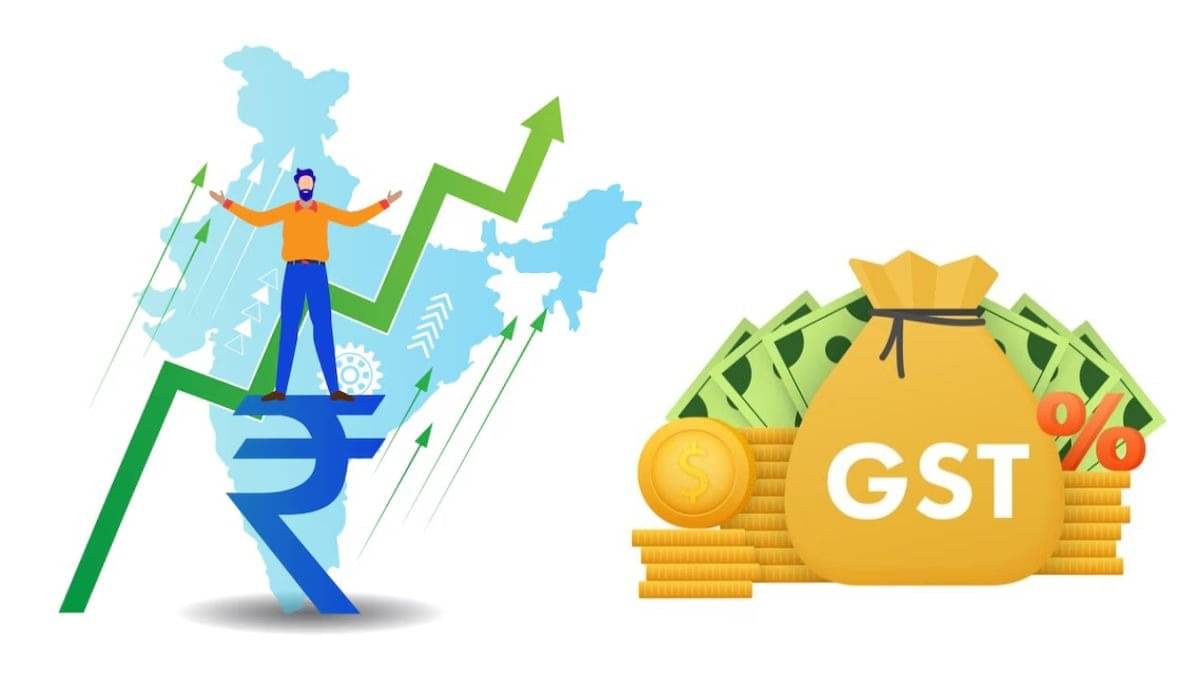India’s GST Collections Soar 9.1% To Rs 1.89 Lakh Crore In September 2025 | Image:
Freepik
India’s Goods and Services Tax (GST) collections for September 2025 showcased robust growth, reaching a gross revenue of Rs 1,89,017 crore, a 9.1% increase compared to Rs 1,73,240 crore in September 2024.
This marks the second consecutive month of strong GST revenue growth, reflecting sustained economic activity, improved compliance, and the impact of recent GST reforms.
The fiscal year 2024-25 has also seen a significant overall rise in GST collections, climbing 9.8% from Rs 10,87,095 crore to Rs 11,93,431 crore.
Strong Growth in GST Collections
The September 2025 GST figures indicate a healthy upward trajectory, with a year-on-year growth of 9.1%. According to data released on Wednesday, October 1, 2025, the gross GST revenue of Rs 1,89,017 crore highlights the strength of domestic consumption and rising import activity.
This follows a 6.5% year-on-year increase in August 2025, when collections reached Rs 1,86,000 crore, underscoring a consistent pattern of growth.
The sustained rise in GST revenues is attributed to robust economic activity, better compliance mechanisms, and recent structural reforms in the GST framework.
Breakdown of Revenue Components
The GST collections comprise Central GST (CGST), State GST (SGST), Integrated GST (IGST), and Cess, all of which recorded positive growth in September 2025. The domestic component was a key driver, with significant contributions from:
- Domestic Revenue: Increased by 6.8%, from Rs 1,27,850 crore in September 2024 to Rs 1,36,525 crore in September 2025.
- Import Revenue: Saw a remarkable 15.6% growth, rising from Rs 45,390 crore to Rs 52,492 crore, reflecting a surge in international trade.
Net Revenue and Refunds
After accounting for refunds, the net domestic revenue for September 2025 stood at Rs 1,20,273 crore, a modest 2.6% increase from Rs 1,17,170 crore in September 2024.
Refunds processed during the month surged by 40.1%, from Rs 20,453 crore to Rs 28,657 crore, indicating improved efficiency in refund processing.
Additionally, net customs revenue grew by 12.5%, from Rs 35,617 crore to Rs 40,086 crore, further bolstering the overall revenue figures.
Fiscal Year Performance
The fiscal year 2024-25 has been a landmark period for GST collections. As reported by ANI, India’s GST system achieved a record gross collection of Rs 22.08 lakh crore, reflecting a 9.4% growth over the previous year.
This milestone underscores the resilience of India’s tax system and its ability to support economic growth through consistent revenue generation.
Impact of GST 2.0 Reforms
Recent reforms under the GST 2.0 framework, rolled out on September 22, 2025, have played a pivotal role in driving revenue growth and enhancing affordability.
According to ANI, daily-use products, packaged foods, and personal care items have been shifted from the 12-18% tax slab to a lower 5% slab.
This rationalization is expected to reduce prices by 4-6%, boosting affordability and stimulating rural demand.
Additionally, staples such as paneer, chapati, and khakhra have been moved to the zero-tax bracket, making essential goods more accessible to consumers.
These reforms have simplified compliance, addressed the inverted duty structure, and provided structural relief to critical sectors.
By placing luxury and sin goods in a higher 40% tax bracket, the government has safeguarded revenue while promoting equitable taxation.
Experts note that these changes are likely to accelerate economic growth by supporting consumption, easing compliance for businesses, and strengthening Micro, Small, and Medium Enterprises (MSMEs).
Conclusion
The 9.1% rise in GST collections to Rs 1,89,017 crore in September 2025 marks a significant milestone for India’s tax system.
With two consecutive months of robust growth, the GST framework is proving to be a reliable source of revenue while supporting economic activity.
The introduction of GST 2.0 reforms has further strengthened the system by promoting affordability, simplifying compliance, and addressing structural challenges.
As India continues to refine its tax policies, the sustained growth in GST collections bodes well for economic stability and sectoral transformation.

